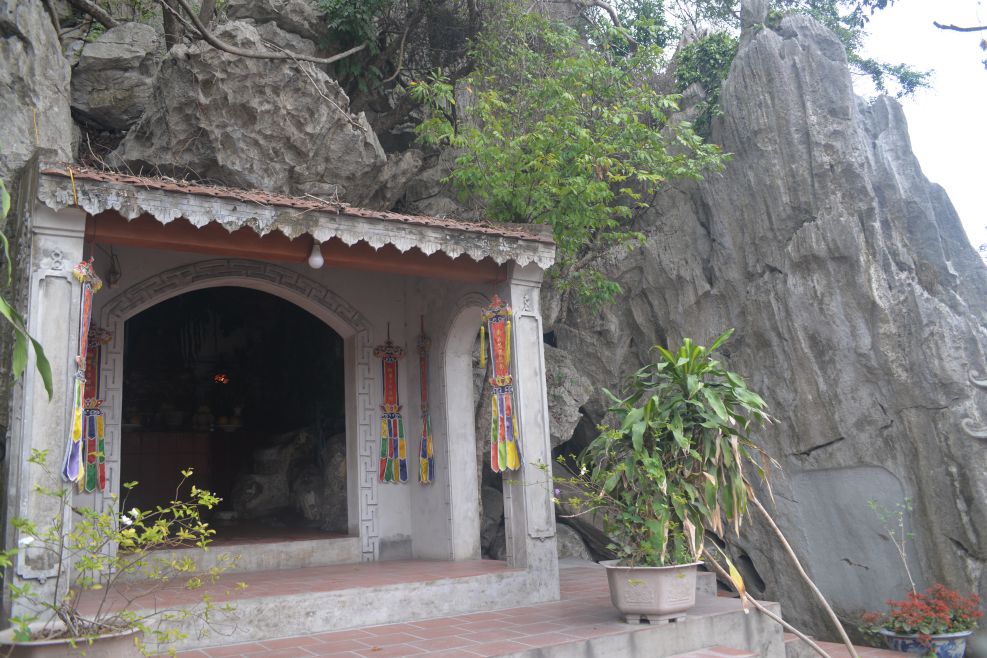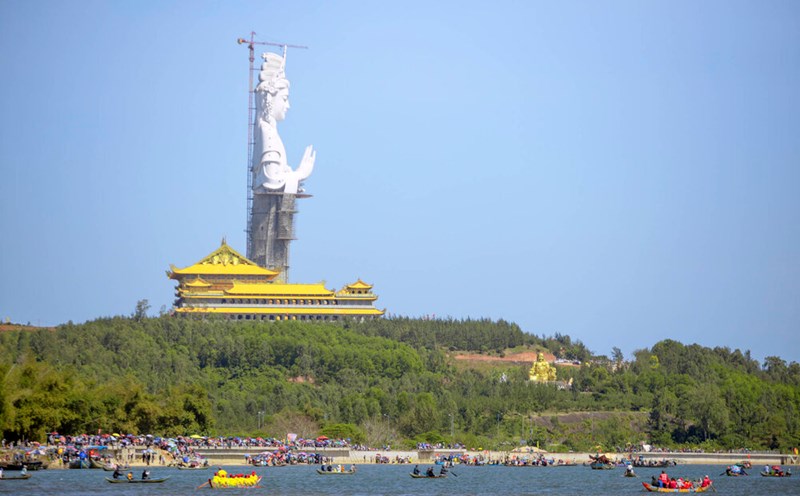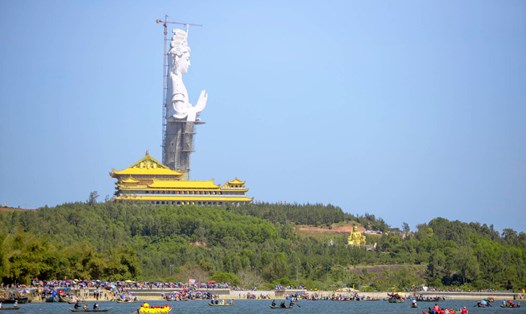With a history of more than 700 years, this ancient pagoda is a witness to the ups and downs of the times and a symbol of harmony between beliefs, culture and patriotism.
The heroic historical mark of the ancient Tran Dynasty
Located on a 36,000m2 plot of land, Canh Huong Pagoda was formerly located in Don Son Commune, Yen Khanh General, Dong Trieu District, Kinh Mon Governorate (now Don Son area, Yen Duc Ward, Dong Trieu City, Quang Ninh Province). The name "Canh Huong" means "beautiful scenery", showing that since ancient times, the pagoda has been honored as an outstanding scenic spot of this land.
According to historical documents, the pagoda was built in the 13th century, during the Tran Dynasty. In particular, this place is associated with the event of King Tran Nhan Tong leading the second resistance war against the Chinese Mong army (1285). After the resounding victory on the Bach Dang River, the king returned to this land, built a pagoda and painted a poem on the cliff of the stone mountain.
The name "Don Son" of the area also appears in ancient documents. The book "Dai Nam nhat Thong Chi" describes: ""... Don Son Mountain stands tall on the Yen Dien River wharf, opposite is a mountain that looks like an elephant in the form of a horse, so it is called Don Son". In particular, from Canh Huong Pagoda, you can see directly Con Meo mountain - where the No-shaped poem of King Tran Nhan Tong still exists.
Under the reign of King Le Hy Tong, Zen master Nhu Nguyen - a student of Zen master Chan Nguyen, a convert to Truc Lam Zen sect - stopped at Canh Huong Pagoda. Recognizing the charming scenery and phong thuy terrain, the Zen master expanded the scale of the pagoda, turning it into a center for worship and dissemination of Buddhist ideas.
The place to worship Buddha and the eight ancestors of the village
Over the past 7 centuries, Canh Huong Pagoda has undergone many restorations and changes. The stele Kien Thanh Huong Tu Bi Ky engraved in the 17th year of Chinh Hoa (1696) recorded the practice of Zen master Nhu Nguyen mobilizing officials and followers from all over to contribute to the reconstruction of the pagoda. During this period, the pagoda consists of 5 front rooms, 3 back rooms, the Holy Ancestor's Church and the monk's houses.

In the 17th - 18th centuries, Canh Huong Pagoda was not only a place of worship but also a stronghold against the Ba'al thieves from the North. In the early 20th century, monk Dam Xuyen - abbot of the pagoda - turned this place into a gathering place for patriotic martyrs in the revolutionary movement. During the resistance war against the French, the pagoda became one of the important bases of the "Three-ord of the East Korean War". In particular, in the August Revolution of 1945, the pagoda was the center of the local people's uprising.
During the resistance war against the US, the pagoda was used as a crop farm for the Vietnam People's Navy, then became an agricultural breeding farm. However, since the 80s of the 20th century, the pagoda has gradually been abandoned and almost completely destroyed. In 2000, Venerable Thich Dao Hien - Deputy Head of the Executive Committee of the Vietnam Buddhist Sangha in Quang Ninh province - visited Canh Huong Pagoda. Since 2004, the pagoda has been restored with the contributions of monks, Buddhists and local people.
Unique architecture in the midst of majestic nature
Canh Huong Pagoda is currently located at the foot of Van Son mountain, creating a "water-based painting" situation. The brick house is about 10,000m2 wide with many unique architectural items. Tam Quan Gate is built with a two-story roof, above which is a bell tower, opening the main yard leading to the lake, where the Quan Am statue is located. The Upper hall is built in the style of the letter " Dinh" including 3 compartments, 2 wings, worshiping Buddha, the god of both Bo Tat and the monk or Quan Am, with the architecture of "roof of the mother of the monk", the place to worship Bo Tat Thien Thu Thien Nhan. In addition, the pagoda also has a One-Mother pagoda located in the Van Son mountain cliff, President Ho Chi Minh's church, Tu An's house, the tower garden and the church of the eight founding ancestors.
Canh Huong Pagoda is not only a place for religious activities of local people but also a center for preserving special cultural and historical values. Relics such as stone steles, steles, and stone models from the Nguyen Dynasty are still preserved intact. Every year, from January 16 to 18, the pagoda organizes a festival with many special activities, notably the "Mr. Bo pig's journey" ceremony - a unique traditional cultural feature of the Don Son people. Not only that, the pagoda is also a place to organize Buddhist, teach and cultural classes for teenagers and children, and at the same time carry out many meaningful charity activities.
In 1993, Canh Huong Pagoda was recognized by the Ministry of Culture and Information as a Historical - Scenic Land, becoming the pride of Dong Trieu land. Canh Huong Pagoda, with its ancient beauty and profound historical value, is not only a place to preserve the quintessence of Buddhism but also a cultural and spiritual symbol of the land of the " Fourte quarters of the Moon Zone". This is definitely a destination not to be missed for those who love history, culture and the peaceful beauty of the land of the sky of Dong Trieu.






